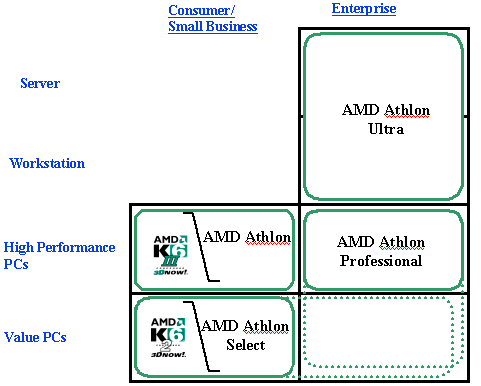Last August the market had its eyes fixed upon AMD's do-or-die creation, the Athlon. The success of this "new" processor would either bring about a dramatic change in the desktop x86 microprocessor industry or simply add to the list of AMD processors that Intel's Pentium III was capable of outperforming.
Luckily for AMD, the Athlon turned out to be quite a success as it completely dominated the 600MHz Pentium III that was available at the time of its launch. But history would repeat itself as it took no longer than three months for Intel to respond with their Pentium III based on the new "Coppermine" core, which included a full 256KB of on-die L2 cache running at clock speed.
The performance delta that existed between the Athlon and the Pentium III (Coppermine) seemed to grow over time as the Athlon's performance was being hindered by the fact that the Athlon had an L2 cache running at a fraction of its clock speed (it ended up that the L2 cache was always running at or below 350MHz) in comparison to the Pentium III, whose smaller 256KB L2 cache was closing in on the 1GHz mark.
Although the Athlon did have a very large L1 cache advantage over the Pentium III (128KB vs. 32KB), only half of that 128KB is a data cache and that 64KB was not enough to compete with the Coppermine's 256KB on-die L2 cache.
It was obvious that AMD needed to move to a new version of the Athlon's core that featured an on-die L2 cache, just like Intel had done with the transition from their Katmai to Coppermine cores. That transition would also allow AMD the opportunity to drive the costs of their CPUs even lower since they could do away with the Slot-A packaging that would become useless with all of the CPU's cache on-die – not to mention the performance boost gained by taking that L2 cache off of the processor card and moving it to its full speed location on the CPU's die itself.
We originally expected the first 1GHz CPU from AMD to feature an on-die L2 cache running at clock speed; unfortunately, we were considerably disappointed as every single Athlon released this year has featured the same old off-die L2 cache running at as low as 1/3 of the clock speed of the core itself (in the case of the 1GHz Athlon).
Things are about to change. Intel's Willamette is still a few months off, but before Intel's true architectural successor to the Pentium Pro comes along, AMD will have the chance to regain the lead that made the Athlon so popular in the first place. Nine months ago we concluded our review of the AMD Athlon with a chart illustrating the potential future of the Athlon. That future is almost upon us, and it's time to take another look at the evolving Athlon core to set a few things straight about AMD's role in the desktop x86 microprocessor industry, at least for the rest of this year.
Future
of the Athlon - August 1999











0 Comments
View All Comments